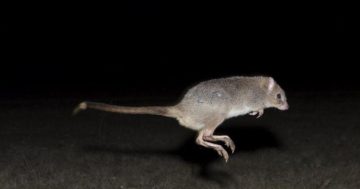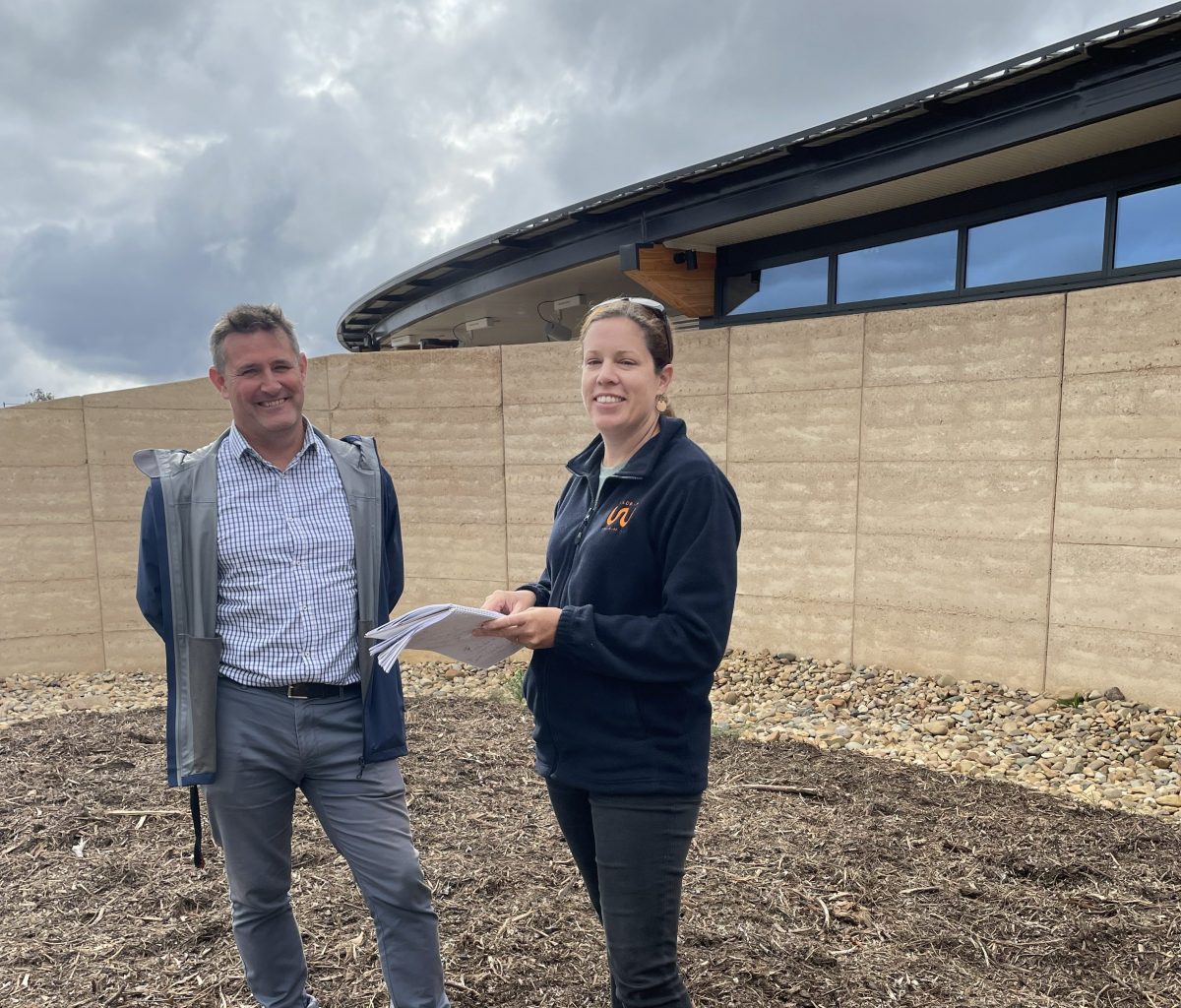
ACT Woodlands and Wetlands CEO Jason Cummings and Mulligans Flat community engagement manager Lauren Brown in front of the new rammed earth wall at Wildbark. Photos: Sally Hopman.
The adjacent street names are a dead giveaway: Bettong, Echidna and Quokka. You may be in the middle of one of Canberra’s newest suburbs, Throsby, but you’re also next door to the soon-to-be completed $5 million Wildbark learning centre, which boasts one of the best backyards in the world – the Mulligans Flat sanctuary.
Five years in the making, Wildbark will welcome visitors within weeks and Region Media was given a sneak preview of what has been described as a “sanctuary in the suburbs”.
Aimed at bringing people, nature and culture together, Wildbark will feature exhibition spaces for workshops and other events showcasing environmental issues like snake safety, natural history, art and learning sessions with visiting experts and artists, tours and programs about the Australian bush, a special nature play area for the kids and areas where visitors can get up close and personal with native animals – in a safe setting for both.
The centre is a joint project between the Woodlands and Wetlands Trust, which runs non-profit operations Mulligans Flat sanctuary and the Odonata Foundation.
The Ngunnawal people are the traditional custodians of the land with their connection to community embedded into the sanctuary’s management.
Mulligans itself is jointly managed by ACT Parks and Conservation and the Australian National University.
Even in its unfinished state it’s clear Wildbark has been considered, designed and built with the environment and sustainability top of mind.
Woodlands and Wetlands Trust CEO Dr Jason Cummings said wherever possible, the most sustainable materials have been used and sourced locally.
The rammed earth walls of the building and the north-facing design, for example, act as a passive heat retention system, with the rammed earth sourced locally from Ginninderra Falls Quarry.
Rainwater tanks provide water for the gardens and toilets in the water-sensitive urban design. A green wall has been established at the back of Wildbark to cool the outdoor deck area and repurposed materials from nearby developments, like pipes and logs, have been used in the outdoor children’s play area.
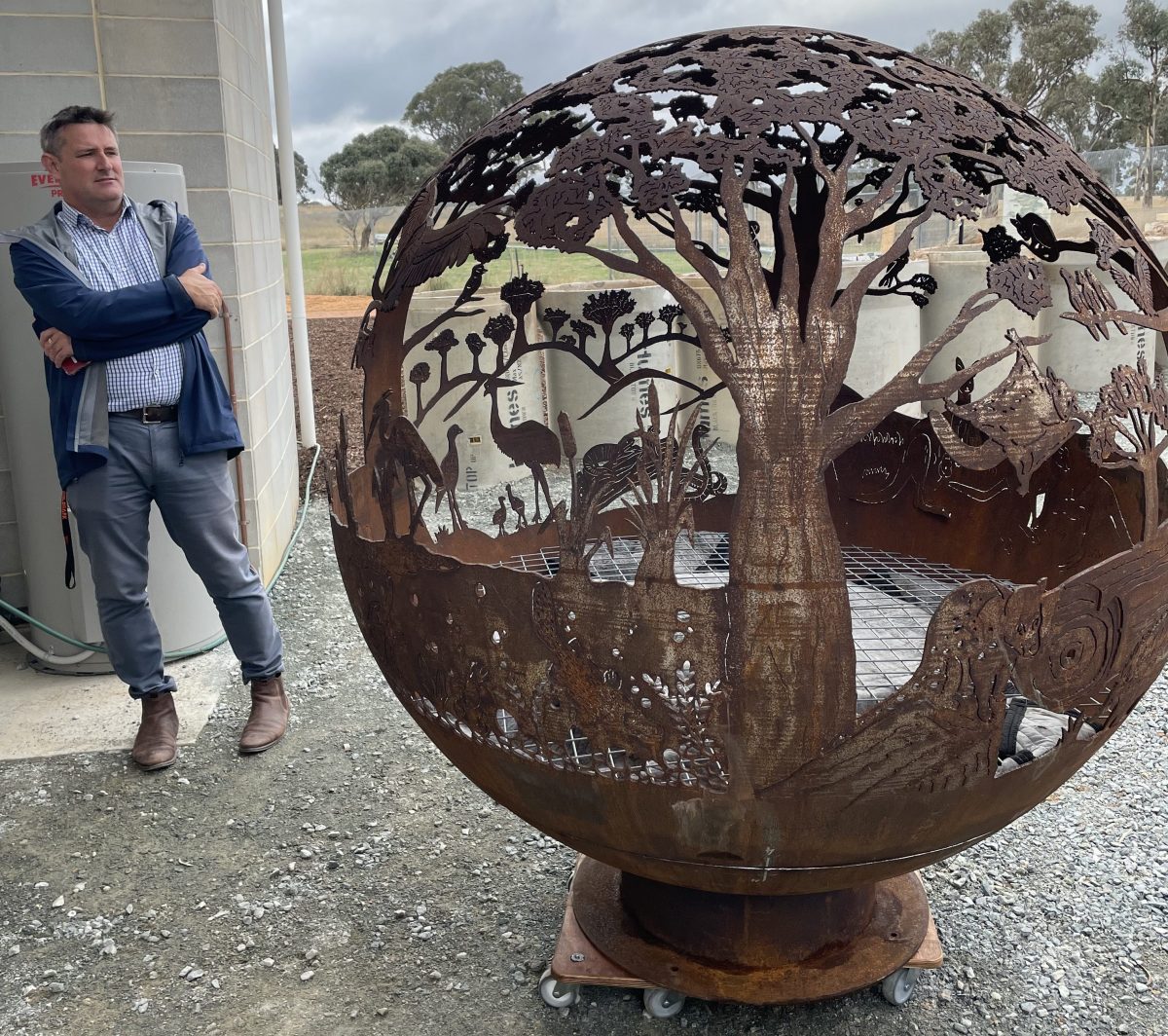
Dr Cummings admires the new fire pit sculpture specially created for Wildbark, which features a native Australian animals and birds design.
Even before the plans were drawn up, Dr Cummings said the Wildbark team started to collect “stuff”, some of which today will play critical roles in the new centre. Like a monster slab of yellowbox timber that will be used for the main desk in the reception hall or the rocks that were sourced locally and are now key features of the outdoor landscape.
The centre itself, which covers a 1-ha site, has been built at the entrance to the sanctuary. Hence, wherever you look from Wildbark, your backyard is the near 1300-ha protected box gum grassy woodland, one of the most threatened ecological environments in the world.
It features a vast reception area on entry, including a tank that takes up the best part of the wall and soon to be filled with native fish and turtles. Even the roof is shaped like a eucalyptus leaf.
Wildbark will also feature a large cafe and reception centre, providing food and drinks to visitors and will also be available for corporate event hire.
Dr Cummings said the search for the best location for the centre began more than eight years ago, with this and two other sites making the shortlist.
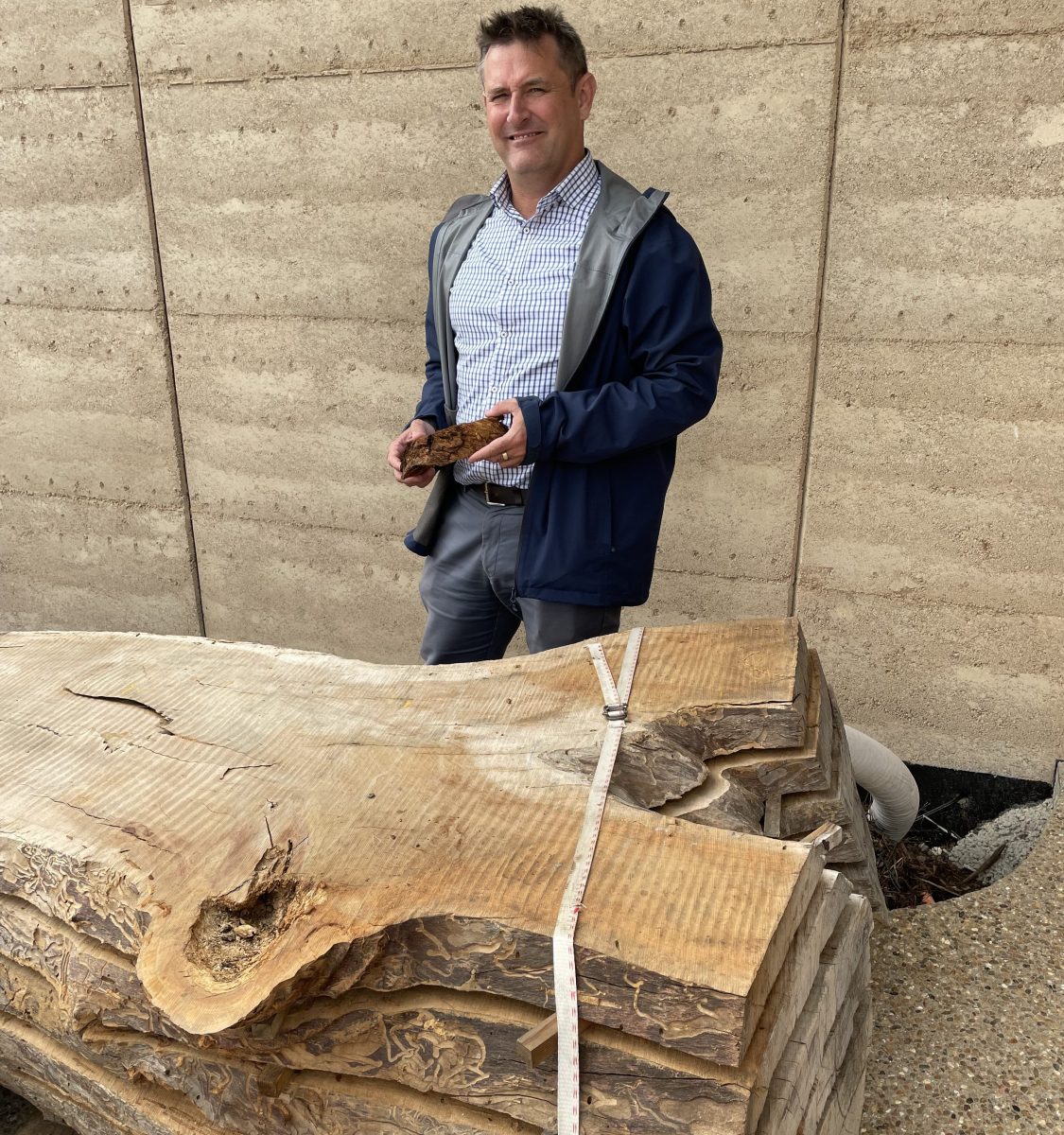
Dr Cummings with the huge piece of yellowbox which will make up the main reception desk on entry into Wildbark.
“We chose this one because it allows the visitor to focus on what makes the whole place so special – the Mulligans Flat sanctuary.
“The sanctuary is unique in the world. It’s funny to think that about 10 years ago when Mulligans Flat was established, Throsby didn’t exist – it was just a paddock in the middle of nowhere. Now look at it.”
He added that he hoped Wildbark would become something special for everyone who visited.
When Region Media visited the site a few weeks out from opening, Dr Cummings said he was excited to see the long-held vision of such a unique facility in the heart of the nation’s capital edging so closer to reality.
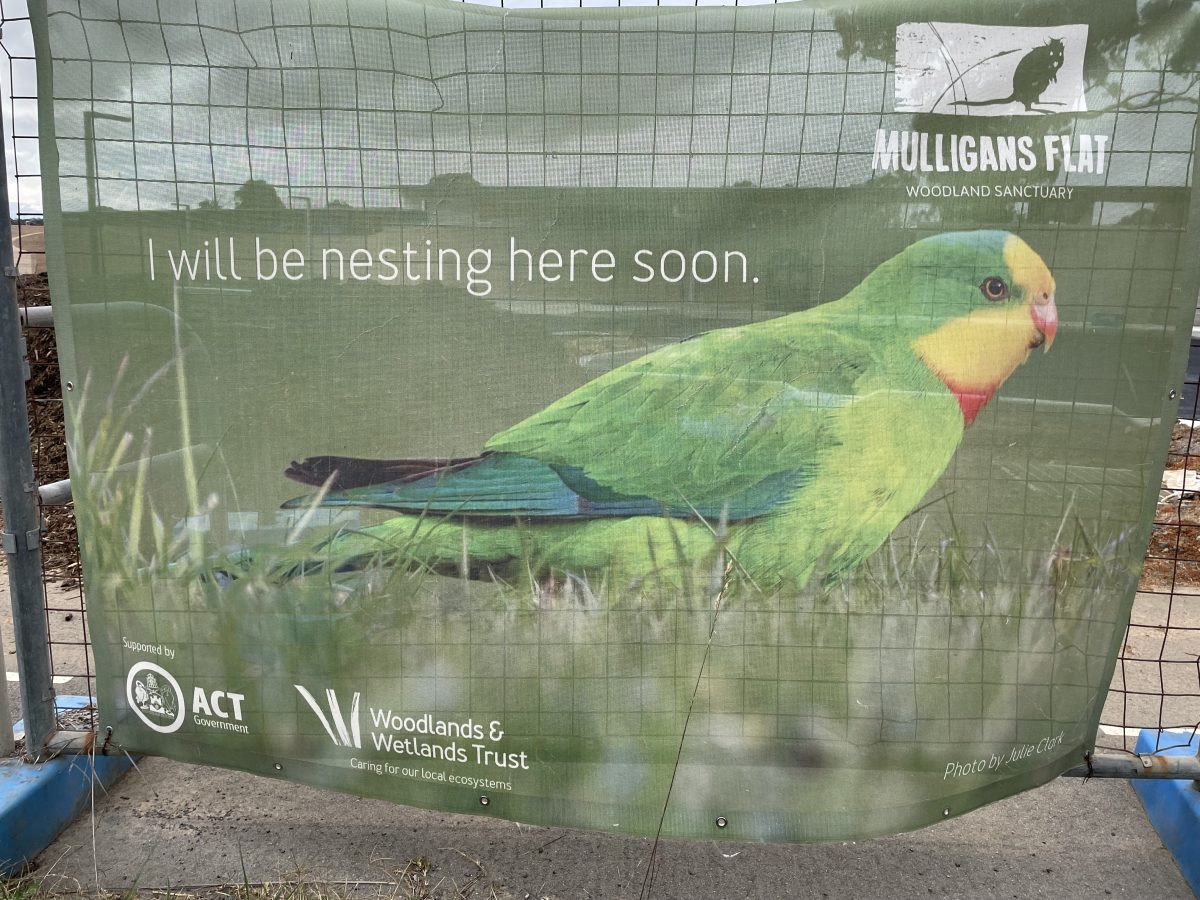
Opening soon: a sign outside the new $5 million Wildbark centre, which is scheduled to open later this month adjacent to Mulligans Flat in Throsby.
COVID-19 and the record rainfall slowed down progress and added to costs, but he said everyone involved in the project should feel very proud.
“It is unique in the world to have something like this in an urban setting,” he said.
“That’s why, from day one, consultation with the community was our top priority. For us, it is a community project so it’s important to have their support and input.”
Mulligans Flat community engagement manager Lauren Brown said Wildbark would also offer myriad opportunities for the already strong band of Mulligans volunteers, from greeting visitors at the new centre to conducting guided tours of the sanctuary.
This weekend, supported by 50 volunteers, Ms Brown and the team will plant 1200 native trees around the new site, in preparation for the opening later this month.
People interested in volunteering should email [email protected] or visit the website.
Original Article published by Sally Hopman on Riotact.



